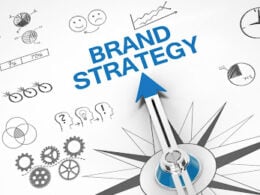Recently, I spoke to the CEO of Your Dollar Matters, Inc., http://www.theformtool.com, Bob  Christensen. As a successful, small business owner who deals with other entrepreneurs in accounting, case management and HR on a regular basis, he is getting the word out about his business and increasing sales via public relations efforts. Here are his insights…
Christensen. As a successful, small business owner who deals with other entrepreneurs in accounting, case management and HR on a regular basis, he is getting the word out about his business and increasing sales via public relations efforts. Here are his insights…
Why did you start Your Dollar Matters?
As a significant purchaser of professional services, particularly from lawyers and accountants, I was often disappointed by the agreements and documents that constituted their final product, which were usually just cut-and-paste hatchet jobs in Word, regurgitations of documents created 20 years ago and reused 1000 times since.
I wanted to provide the market with the kind of professional, form-based product I expected rather than what I was getting. While I don’t mind paying well for expert guidance and advice, compensating someone hundreds of dollars an hour for laboriously tweaking documents they’ve written 100 times before strikes me as ludicrous. I’ll gladly pay by the gram for brains, but not by the pound for the words!
With Your Dollar Matters, we saw an opportunity to do well by doing good: good for professionals who are yoked to their clocks; good for clients who want lower prices and better service; even good for “the system” by improving courthouse and bureaucratic productivity, too, by giving taxpayers a more efficient bang for the buck.
What advice do you have for others starting a new business?
Figure out who needs a better mousetrap then build one that is exponentially better than the best. Before you launch, though, figure out how you’re going to convince your market that it actually needs your better device.
Because, as it should, the market only cares about one question, “What’s in it for me?” A successful entrepreneur needs to have an overwhelmingly convincing answer to that question.
How are you getting the word out about your business and why?
Times have changed. Traditional paid media is fading fast. Consumers, including business consumers, have instant access to what I think of as “crowd experience,” reports on product experiences from users in near real-time.
Our biggest decision was to adopt a “Freeconomics” business model similar to what Facebook, Pandorajam and Twitter have done, where a small minority of users pay for the service while the vast majority get it for free. (Note: “Freeconomics” is a strategy outlined by Chris Anderson in his 2009 bestseller, “Free: The Future of a Radical Price.”) We expected that decision would help us build a user base fast, to which we could later turn for word of mouth (or keyboard), product reviews, testimonials and paid upgrades.
Three of the unexpected consequences of that decision were fascinating. First, overnight TheFormTool found an international following among people who need document assembly on a regular basis. Second, because people could actually count on a real product and a real lifetime license for absolutely free, they stepped up to decisions they otherwise might not have. Finally, the incredibly rapid adoption into other industries – contractors, estimators, environmental engineers, insurance and a dozen others – is possible because people could justify giving TheFormTool a chance because of the low-risk threshold of their decision.
What marketing and publicity strategies have worked so far and why?
As buyers, we all look for the Amazon ratings or online ratings in other virtual stores. We trust those masses of anonymous, prior purchasers. With TheFormTool, our task was to develop a respectably-sized user base just as fast as possible and to give users an opportunity to crow or complain about our product and service.
Now, ordinary people really can assemble the smartest documents™ in the world and they do, easily – the feedback and chatter were stellar. After awhile, the professionals started noticing the chatter, and we began to have opportunities to help them with editorial content, which provided free media coverage, which fed the virtuous circle.
What do you plan to do in the areas of PR and marketing in the future to build awareness and why?
Our job is to expand the user base and continually enhance document-assembly users’ experience so that they come to the point where the reasons for buying are just overwhelming. The best way to do that is to share current users’ experience with the interested public.
That translates into tightly focused attention on our primary vertical markets. We’ll work with PR professionals to identify those markets and to seek and exploit opportunities for press attention within them.
Why is public relations important to your overall, business goals right now?
We want TheFormTool to become as ubiquitous as pen and paper once were. For that, we need awareness among 100 million or more potential, document-assembly purchasers of their need for increased productivity.
We need everyone to agree with us that it’s time for documents to start thinking on their own, for promissory notes to be smart enough to compute their own payments and for a contractor’s bid form to fill itself out, correctly and instantly. Public relations is the most efficient way to accomplish these goals.
What PR and marketing tips do you have for other, new business owners?
Build a story just as fast as possible, but remember that the best stories are not about you or your company. The very best stories are about users and customers. They’re the ones that are reinventing the world.
Thanks for the information Bob. Hopefully, your insights will help other small business owners with their PR and marketing activities.
How about you? Do you have marketing and PR tips for other entrepreneurs? Please write to me below or visit my site at www.rembrandtwrites.com for more information.






